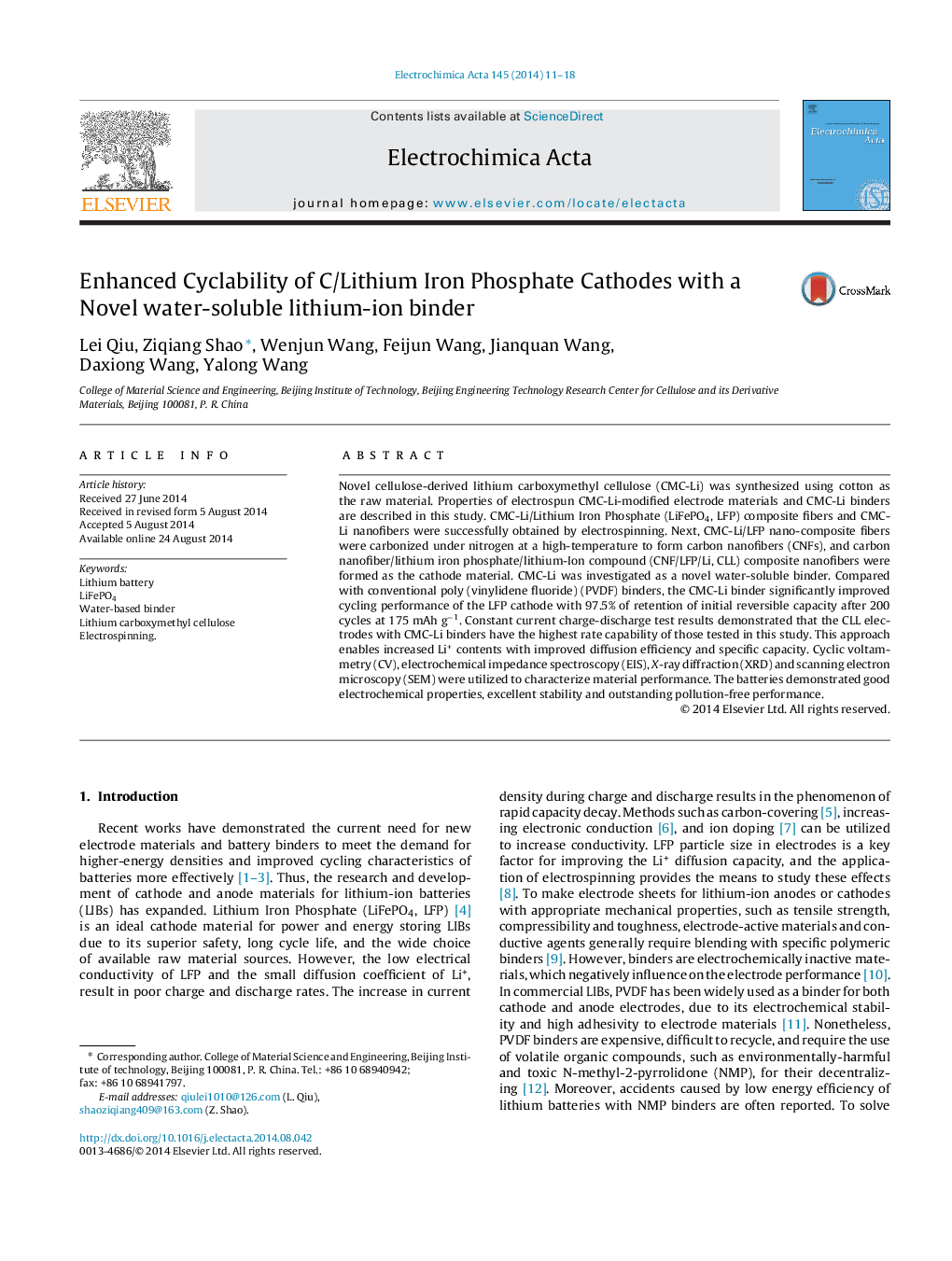| Article ID | Journal | Published Year | Pages | File Type |
|---|---|---|---|---|
| 184983 | Electrochimica Acta | 2014 | 8 Pages |
•The synthesis of CMC-Li using cotton as raw material is newly reported.•Water-soluble polysaccharide CMC-Li nanofibers are obtained by electrospinning.•Novel water-soluble lithium-ion binder CMC-Li is used in lithium-ion battery.•The CMC-Li binder improves the cyclability of the lithium-ion battery.•These new material and process may find appliance with other electrode materials.
Novel cellulose-derived lithium carboxymethyl cellulose (CMC-Li) was synthesized using cotton as the raw material. Properties of electrospun CMC-Li-modified electrode materials and CMC-Li binders are described in this study. CMC-Li/Lithium Iron Phosphate (LiFePO4, LFP) composite fibers and CMC-Li nanofibers were successfully obtained by electrospinning. Next, CMC-Li/LFP nano-composite fibers were carbonized under nitrogen at a high-temperature to form carbon nanofibers (CNFs), and carbon nanofiber/lithium iron phosphate/lithium-Ion compound (CNF/LFP/Li, CLL) composite nanofibers were formed as the cathode material. CMC-Li was investigated as a novel water-soluble binder. Compared with conventional poly (vinylidene fluoride) (PVDF) binders, the CMC-Li binder significantly improved cycling performance of the LFP cathode with 97.5% of retention of initial reversible capacity after 200 cycles at 175 mAh g−1. Constant current charge-discharge test results demonstrated that the CLL electrodes with CMC-Li binders have the highest rate capability of those tested in this study. This approach enables increased Li+ contents with improved diffusion efficiency and specific capacity. Cyclic voltammetry (CV), electrochemical impedance spectroscopy (EIS), X-ray diffraction (XRD) and scanning electron microscopy (SEM) were utilized to characterize material performance. The batteries demonstrated good electrochemical properties, excellent stability and outstanding pollution-free performance.
Graphical abstractLithium carboxymethyl cellulose (CMC-Li) was synthesized. CMC-Li, CMC-Li/Lithium Iron Phosphate (LiFePO4, LFP) and carbon nanofiber/lithium iron phosphate/lithium-Ion compound (CNF/LFP/Li, CLL) composite nanofibers were successfully obtained. A new method to modify electrode materials with lithium-ion polymer by electrospinning was developed, and CMC-Li was used as a novel lithium-ion binder in batteries. The batteries show good electrochemical properties, excellent stability and hight specific capacity.Figure optionsDownload full-size imageDownload as PowerPoint slide
